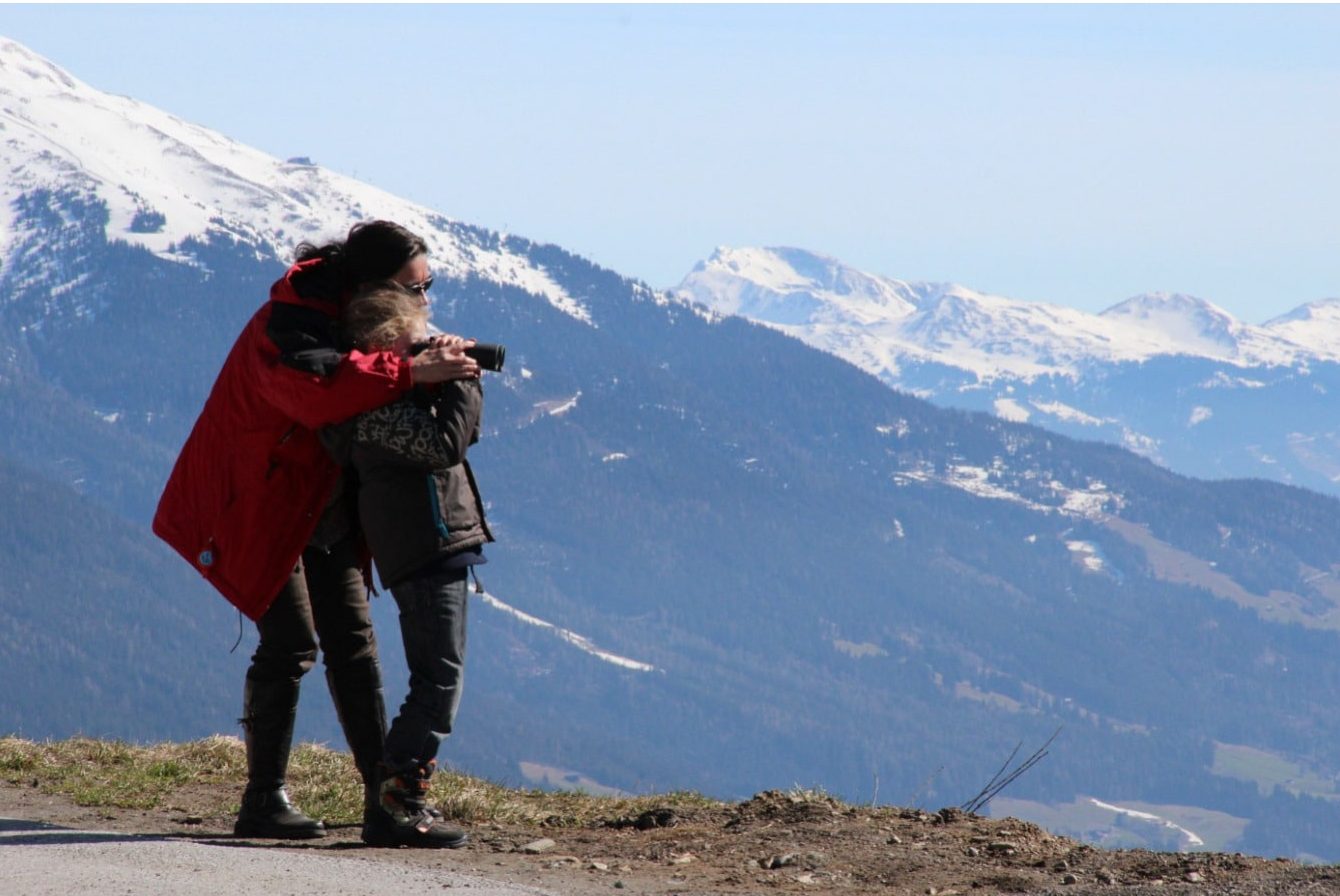Binoculars are an investment, and generally a very expensive one. When you’ve never used binoculars before, the idea of investing and learning how to use them can be overwhelming to tackle. Or maybe you’ve used borrowed pairs on guided tours, but always had a trained professional with you to answer questions or help you with focusing. It’s a bit daunting to step out on your own for the first time.
With these six easy tips, though, you can begin a new binocular hobby with confidence. Once you’ve mastered these basics, you’ll be using your binoculars like a pro.
#1 Start With A Small, Easy To Use Size
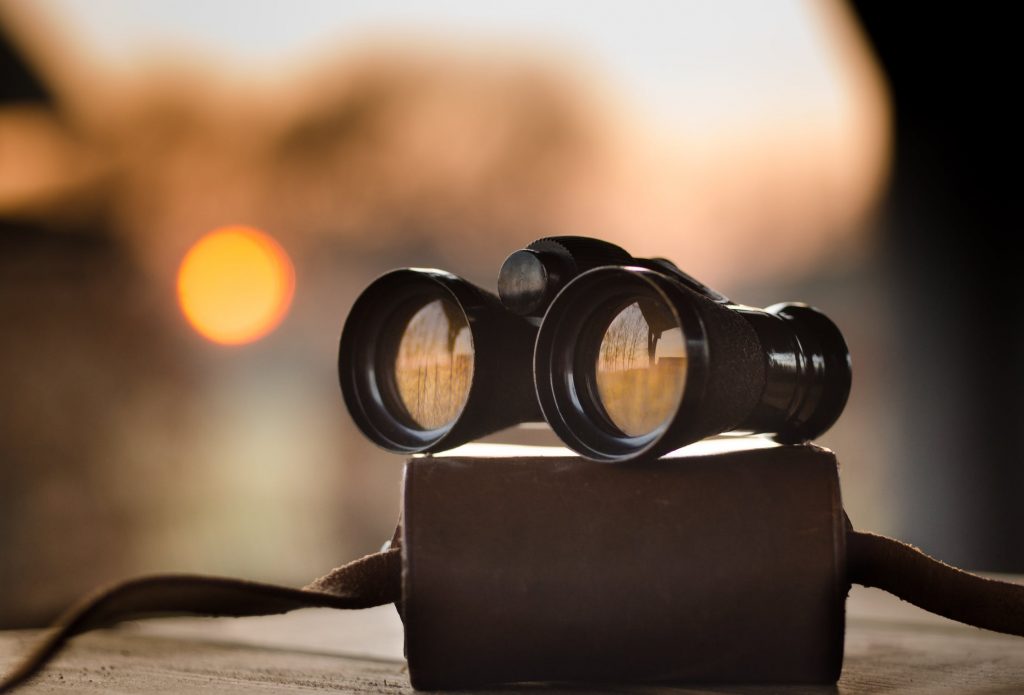
Large binoculars tend to be heavy and difficult to manage, which means you’re in for a shaky view without a strong grip.
Compact binoculars — which will usually have all the bells and whistles of a full-size pair minus the crisp image and resolution — are a cheap way to lean in to a new binocular hobby. You can teach yourself the basics like focusing, diopter usage, even just creating the habit of carrying the binoculars with you, without breaking the bank. The compact pair will be lighter and, therefore, easier to maneuver as you get used to focusing as quickly as possible and before the bird you just spotted flies away!
The best option is to borrow a set of compact binoculars. That way, you can save your budget to buy the very best pair of full-size binoculars that you can afford. But you can easily find a compact pair for under $100 as your starter binoculars.
ALSO READ: “4 Best Lightweight Binoculars for Birdwatching“
#2 Buy The Best You Can Afford
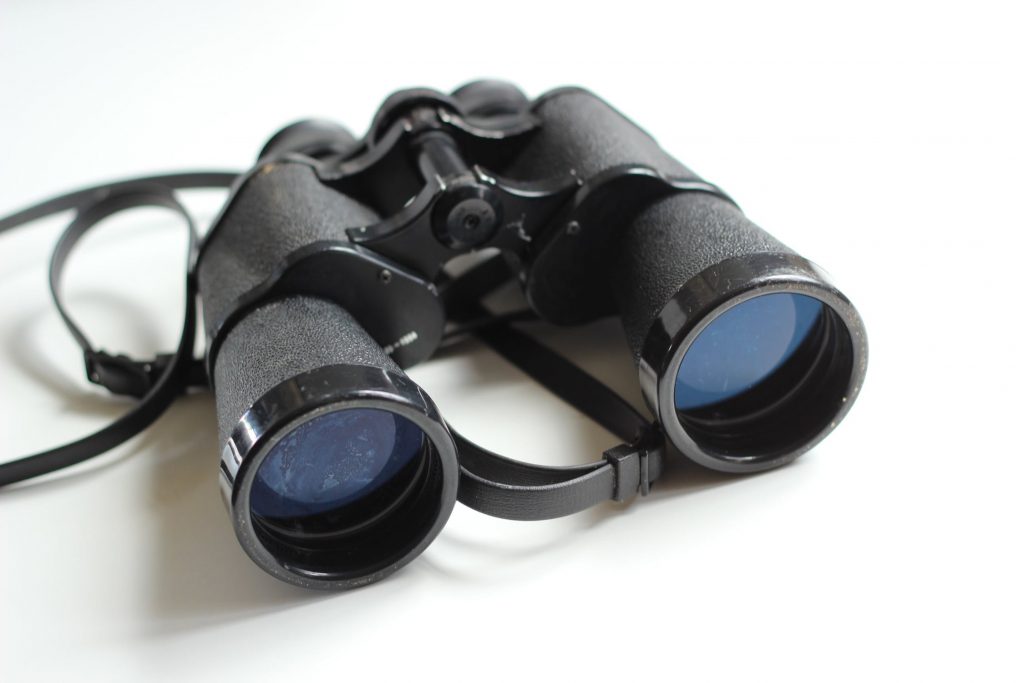
Once you’ve gotten comfortable with using the basic functions of a pair of binoculars, you’ll be ready to invest in a full-size pair. Compact binoculars are great for indoor activities (like zooming in on actors in a theater), but lack a lot of the features that make binoculars so useful in the first place.
These days, a high-quality full-size pair can run anywhere from under $100 to $3000, and that can cause sticker shock if you’re just starting out. But thanks to a decrease in the cost of optics manufacturing, you’re able to get a great pair at any price range.
First, determine what you primarily want to use the binoculars for, and that will tell you what features you need to find in a set. For example, if you’re going to be in a desert, you’ll want to focus on comparing binoculars that perform well in bright sunlight. But if you’re going to be stargazing, you’ll want a pair that performs well in low-light conditions.
Next, determine your budget, and check out our article on the best pair in your range!
ALSO READ: “What Are Binoculars Used For? (The 6 Main Uses)”
#3 Exploit The Diopter
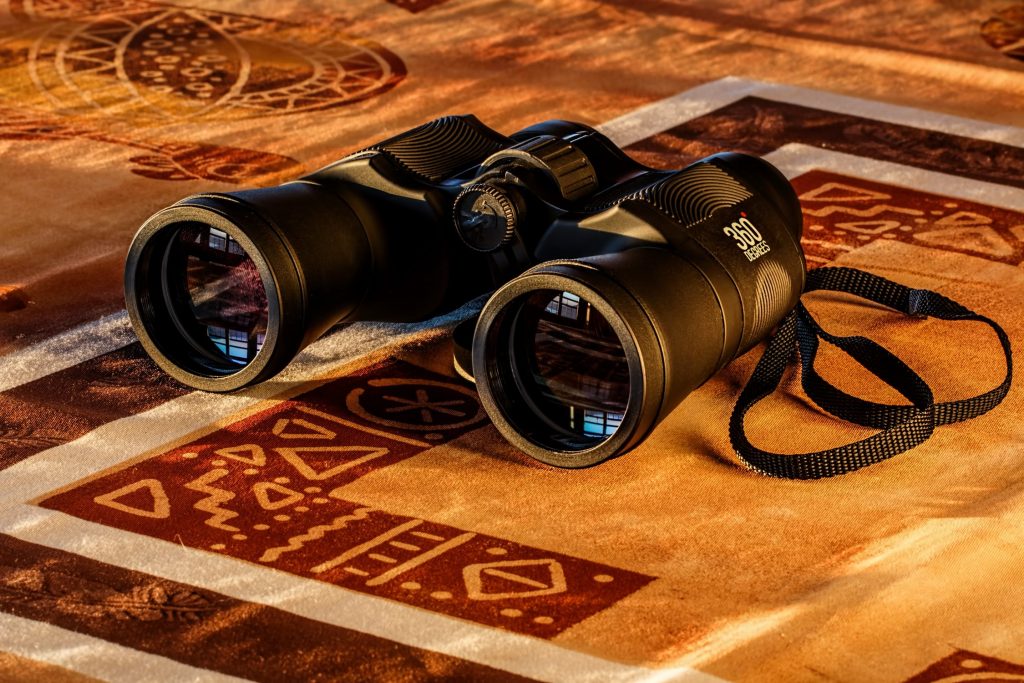
First of all, always buy binoculars that include a diopter — preferably a locking diopter. Anyone with an astigmatism can tell you that your left eye doesn’t always see the exact same way as your right, but sometimes the differences in your vision could be more subtle than that.
All binoculars have a central focusing knob, but the diopter is a secondary focusing function. Adjusting the diopter allows you to tailor each lens’ refractive power to your individual eyes’ needs. Basically, a diopter corrects for any tiny (or big) difference in your eyes’ seeing power.
Having the diopter gives you so much more customization within the focusing of your image. Not only will you be able to focus the lenses to lock in on a target, but you’ll be able to focus each of your eyes separately in order to gain the crispest, most detailed image possible.
ALSO READ: “Best Binoculars for Elk Hunting“
#4 Use The Strap
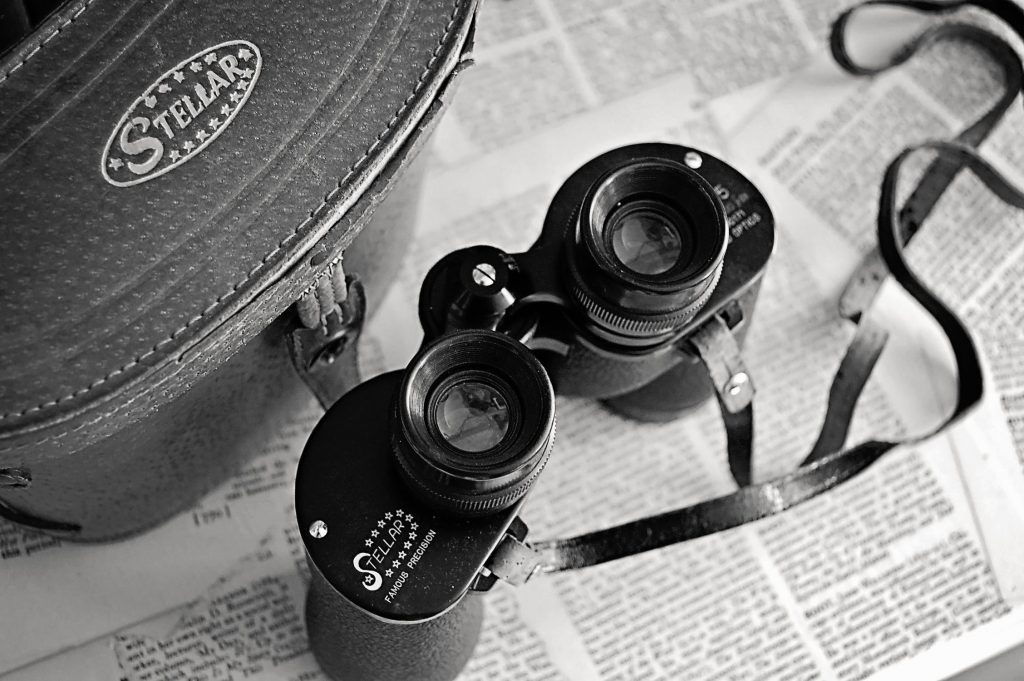
Odds are that your binoculars will travel with you over some rough terrain. They’re heavy. Your grip slips. It rains on your camping trip. Things happen.
Your binoculars are an investment — often a very expensive investment — and while they’re worth that money, make sure you set yourself up for success. First buy a sturdy pair, preferably ones with a hard, single-body casing to protect from dust and falls, and make sure your lenses are waterproof.
But, most importantly, use the strap!
Almost all binoculars will come with a band attached that’s long enough to go around either your neck or your wrist. The wrist-strap is serviceable, but I recommend replacing it if you can with a strap to go around your neck. The neck-strap is a lot more convenient when you need to quickly get your binoculars into place. It also frees your hands — to catch yourself if you fall, or to climb up a set of boulders in your path — for the trek.
You’ll be grateful for the strap the first time you slip on some rocky terrain, or even just need a drink of water.
#5 Losing The Fauna (or flora)
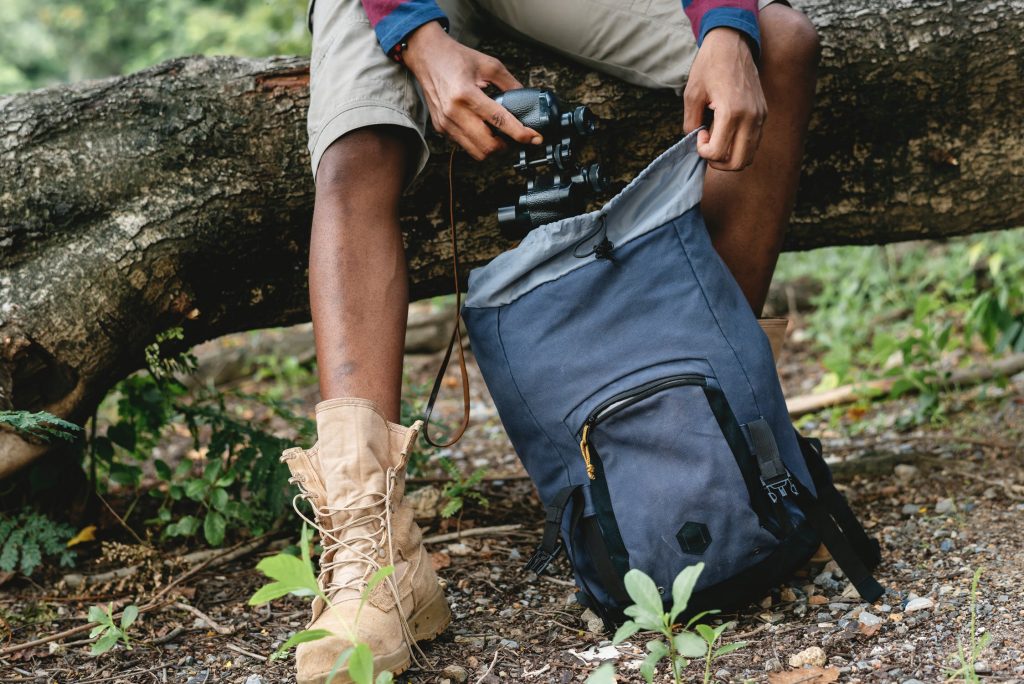
This one can be a bit difficult for even the most seasoned binocular user. You finally spot the flora or fauna you’ve been searching for, glance down to grab your binoculars, and by the time you train your binoculars where you saw it, it’s gone.
Sometimes the leaf has blown away, or the fauna has moved, but usually you’ve lost the target in your field of view. You’re left moving your binoculars in a circular pattern, trying to spot what you were sure was right there.
We can’t promise this trick will make that bird stay in place, but we can promise that your binoculars will be trained on the place you spotted it.
First, use your neck-strap (see #4). Second, lock your eyes on the target. Third, lift your binoculars.
To practice, pick a leaf in a middle distance that has some sort of distinguishing characteristic (it’s a bit brighter than the others, or has a pattern that’s easy to spot). Without looking away from that leaf, reach down and grip your binoculars. Bring them to your eyes without moving your gaze, and when you look through the binoculars, you should see your target.
With practice, you’ll get faster and more accurate every time!
ALSO READ: “The 4 Best Binoculars for Wildlife Viewing“
#6 Optics Care
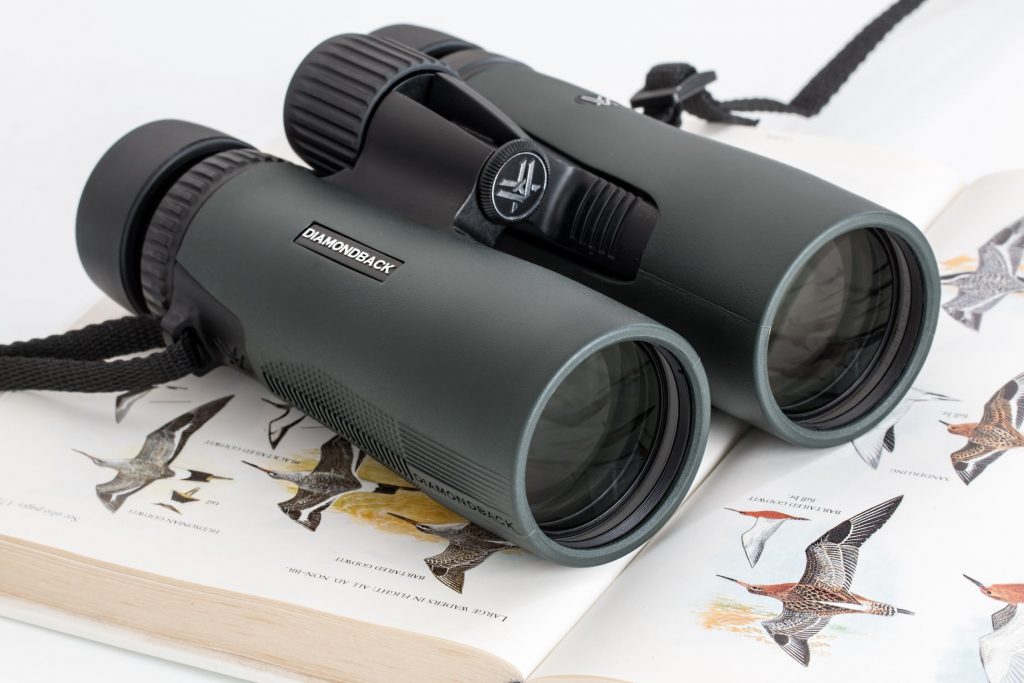
Binoculars are only as good as their lenses, and they require constant care to keep them in top-performing condition. Make sure to buy lens cloths — microfiber cloths designed for cleaning your lenses without scratching — and a coated optics cleaning solution. You can find both at a camera store or wherever you bought your binoculars.
Compressed air — found at any hardware store — is also a great tool to have on hand. You can use the cans to blow away any dust or dirt that collects on your lenses despite your best efforts on the trek. Blowing those bits away decreases the chance of scratching your lenses while cleaning.
Once you’ve blown away any debris on your lens, wet the corner of a lens cloth with your cleaning solution. Working in small, gentle circles, clean off each lens. Then use a dry corner of your lens cloth to dry off the solution, again in small, gentle circles.
If you let the cleaning solution dry on the lens, you’ll be left with water spots. If you don’t work in circles, you’re more likely to wind up with streaks across your lenses.
Always store your binoculars in their case and in a cool, dry place. While hard body casings and waterproof lenses will protect the inner workings of your binoculars, mold can still collect on the outer lenses if you’re not vigilant.
Also, read this article for more tips on how to clean and take care of your optics.
Bonus Tip: Focus Like A Pro!
To begin, locate the central focusing knob on your binoculars, as well as the diopter, which is usually located on the right eye piece and is a ring around the ocular. Sometimes the starting or neutral position is marked with a “0” and sometimes a symbol.
Train your binoculars on something stationary, such as a tree, lit well enough that you can make out the details of it. Aim for something in a middle distance — something that isn’t as far as the farthest range of your binoculars’ magnification power, but not something standing right next to you either. A tree branch a few dozen yards away is usually great.
Once you’ve chosen your object, place the lens cap over the left lens. (Don’t close your left eye as this can cause slight squinting in your right eye as the muscles of your face pull together.) Adjust the diopter until the image in your right eye is perfectly clear.
Next cover the right lens and use the central focusing knob to focus both barrels at once. When the image is clear and crisp, uncover the right lens, and your focus should be perfect!
Conclusion
That’s all the tips we got on being an expert with binoculars.
If you found this article helpful, don’t forget to share it with friends and family!

About The Author:
Hi! I’m Will Scott, the author of this post. I’m an outdoor enthusiast with over 10 years experience. I love trying out new gear and reviewing it so that other adventurers can get the most out of their experiences. I hope you’ve found my website informative, educational and helpful.

